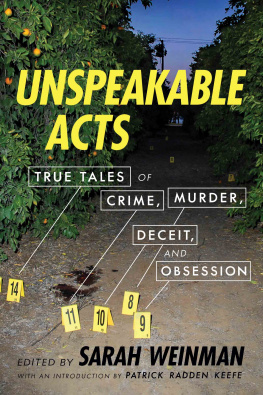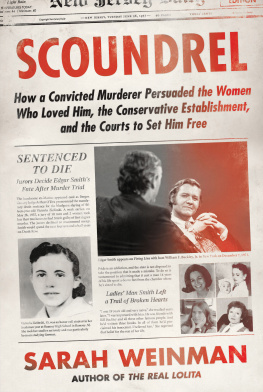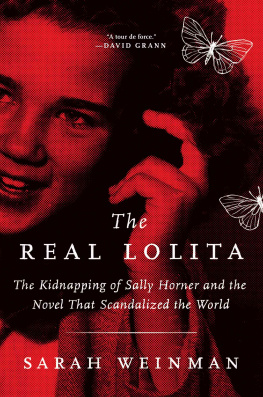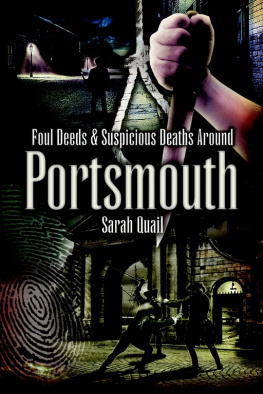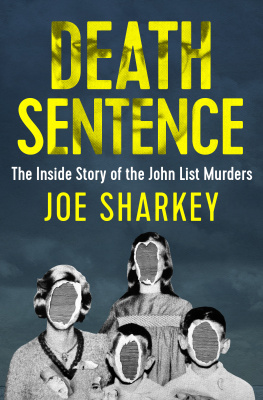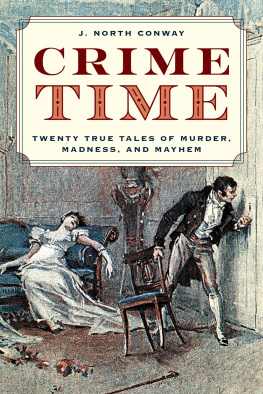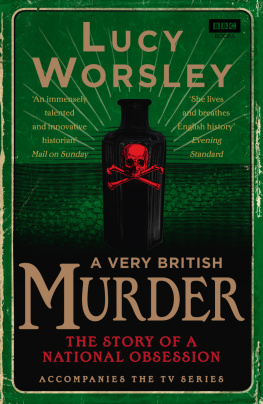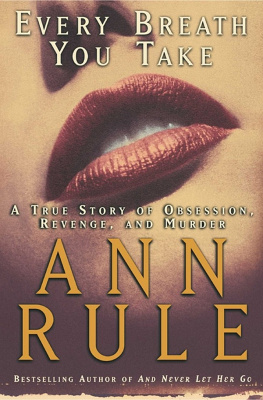Sarah Weinman - Unspeakable Acts: True Tales of Crime, Murder, Deceit, and Obsession
Here you can read online Sarah Weinman - Unspeakable Acts: True Tales of Crime, Murder, Deceit, and Obsession full text of the book (entire story) in english for free. Download pdf and epub, get meaning, cover and reviews about this ebook. year: 2020, publisher: HarperCollins, genre: Detective and thriller. Description of the work, (preface) as well as reviews are available. Best literature library LitArk.com created for fans of good reading and offers a wide selection of genres:
Romance novel
Science fiction
Adventure
Detective
Science
History
Home and family
Prose
Art
Politics
Computer
Non-fiction
Religion
Business
Children
Humor
Choose a favorite category and find really read worthwhile books. Enjoy immersion in the world of imagination, feel the emotions of the characters or learn something new for yourself, make an fascinating discovery.
- Book:Unspeakable Acts: True Tales of Crime, Murder, Deceit, and Obsession
- Author:
- Publisher:HarperCollins
- Genre:
- Year:2020
- Rating:5 / 5
- Favourites:Add to favourites
- Your mark:
- 100
- 1
- 2
- 3
- 4
- 5
Unspeakable Acts: True Tales of Crime, Murder, Deceit, and Obsession: summary, description and annotation
We offer to read an annotation, description, summary or preface (depends on what the author of the book "Unspeakable Acts: True Tales of Crime, Murder, Deceit, and Obsession" wrote himself). If you haven't found the necessary information about the book — write in the comments, we will try to find it.
Unspeakable Acts: True Tales of Crime, Murder, Deceit, and Obsession — read online for free the complete book (whole text) full work
Below is the text of the book, divided by pages. System saving the place of the last page read, allows you to conveniently read the book "Unspeakable Acts: True Tales of Crime, Murder, Deceit, and Obsession" online for free, without having to search again every time where you left off. Put a bookmark, and you can go to the page where you finished reading at any time.
Font size:
Interval:
Bookmark:
To those who find meaning, solace, catharsis, and outrage in crime stories, which is all of us
W hen I was in fourth grade, kids told stories about a killer who was supposedly stalking the area. This was in Milton, Massachusetts, a suburb of Boston, in the mid-1980s. The man drove a Chevy Nova and carried a knife, my classmates said. He was known as the Milton Quincy Stabber. I dont have many specific recollections of fourth grade, but I can vividly remember walking out of art class, positively vibrating with terror. The stabber was at large, in our area, and would almost certainly stab again. I suddenly became attuned to the make and model of every approaching car, though the Milton Quincy Stabber was said to direct his violence only at women.
If I ever learned what became of the Milton Quincy Stabber, I have forgotten. Which is strange, when you think about it, because even as children, we are drawn to the puzzle of crime narratives, and if we read them compulsively its often because we feel compelled to hunt for a solution. My favorite part of any Sherlock Holmes story was always the final scene, when the great detective reassembles the random clues into a coherent narrative that is legible only in retrospect. Was the stabber apprehended? If I bothered to find out as a kid, the memory hasnt lingered. What has stayed with me, indelibly, is that first vicarious brush with the concept of random murder: the whiff of mortal fear, the revelation that sometimes life doesnt stretch out before you in an unbroken path to old age. Sometimes it terminates, abruptly, when a stranger pulls over in his Chevy Nova.
A few years ago, I spent some time back in Massachusetts to report the story of an unrelated killing, and while I was there, I started thinking about the Milton Quincy Stabber. When I ran the phrase through Google, however, nothing came up. My mind flipped through a sequence of bizarre explanations. Had one of my fourth-grade classmates invented the stabber? This was a feature of childhood before the advent of the search engine: nobody fact-checked anything. Wild legends circulated, like the one about the untimely death of little Mikey, who made the suicidal mistake of mixing Coke and Pop Rocks. But could someone have invented a serial killer? Even as I weighed this possibility, a more troubling scenario presented itself: Could I have concocted the story myself? As a child, I had a febrile imaginationnot a fantasy life per se, but the attention of an actuary to the probability of improbable catastrophes. I slept with the lights on for years. Could I have somehow fantasized the stabber?
I mention all this because the whole episode captures two distinct elements of our relationship with stories about real crimes. The first is that, from childhood, we are hardwired to be fascinated by danger, and by the dark potential of other humans. When you read a Patricia Highsmith novel, the abyss of human depravity into which you peer runs only as deep as Highsmiths imagination. But a true story of human cruelty engagesand implicatesthe reader in a more profound and unsettling way.
The story of the Milton Quincy Stabber was also a story, with the familiar contours of a fairy tale: a predator, a string of innocent victims, a hunting ground that children should avoid. If true crime is enjoying a renaissance at the moment, I think it is at least in part a function of narrative modalities: bingeable, long-form, serialized storytelling lends itself particularly well to tales of investigation. At the same time, any journalist seeking to incorporate the truth of an actual crime into some engaging narrative construct must contend with very real moral hazard. The most engaging crime stories often take the form of a mystery or a thriller. But if theyre true, they are also, almost always, tragedies. The more lurid the story, the more likely the victimsand the real human costs of the crimeare to be forgotten.
For the crime reporter, certain forms of selection bias can also take hold. Narrative tends to mean charactersprotagonists and antagonists, conflict and motivationand crime writing has historically favored certain sorts of characters (white female murder victims, to take the most glaring example) to the exclusion of others. Theres a subtler danger, too, when we focus on stories of individual characters and crimes, because the greatest crimes, now and always, have been systemic, and systemic stories are harder to tell. One conspicuous upside of the current boom in crime reportage is that it has created space and demand and recognition for writing about crime that is more representativeand for an approach to crime writing that grapples more overtly with these risks. On both counts, the collection you are about to read is exemplary and overdue.
As I was preparing to write this introduction, I searched one more time for the Milton Quincy Stabber, and found an article Id missed when I looked before, a UPI story from January 1987, with the headline, Hunt for Stabber Intensifies. Over a three-week period that winter, a man named William Marguetty stabbed four women in Milton and Quincy. They all survived, but before he was apprehended that March, he murdered a twenty-seven-year-old named Ann Gillietti. She was found stabbed to death in her apartment in a Roslindale housing project. In a typical failure of crime reportage, I could find hardly any information about Gillietti online, apart from the fact of her murderand the terrible detail that she was not alone in the apartment when her killer arrived; her two-year-old daughter was with her and survived the attack.
Marguetty was eventually convicted of murder and attempted murder, and sentenced to life in prison. He had arrived in the United States on the Mariel boatlift in 1980, after being released from a prison in Cuba. Victims have provided different descriptions of the attackers car, the UPI reported. But two of the women said it might have been a rust-colored Chevy Nova. I hadnt imagined the story, nor had my classmates. We just had the wrong dime-store nickname. In the press, Marguetty wasnt the Milton Quincy Stabber but the South Shore Stalker.
T rue crime is having a moment. But then, one could say true crime has been having a moment for more than three centuries, since the New Englandbased minister Cotton Mather published his execution sermons for eager Puritan audiences, then, with an altogether different pamphlet, laid the groundwork for the Salem Witch Trials in 1692.
Lately, its felt different. More highbrow. More participatory. More investigative. More in the public interest. More reflective, critical, even postmodern. The current state of the genre has broadened far past stories once reliably contained within the pages of mass-market paperbacks, covers with dripping fonts. Or tabloid-friendly tales slickly packaged into programs that air on Investigation Discovery, Oxygen, and Lifetime.
The new true crime moment dates to the fall of 2014, when the radio program This American Life presented the first series of its podcast spinoff, Serial. Sarah Koenigs week-by-week account of the 1999 murder of Hae Min Lee, the incarceration of Adnan Syed, and why his conviction could have been a wrongful one was not just a hit but a bona fide cultural phenomenon. Everyone who was anyone listened to Serial, even if they had never consumedor knew they were consumingtrue crime before then.
Serials astonishing success paved the way for even stronger, more superbly reported podcasts, such as In the Dark, Bear Brook (where victim and perpetrator identification led to the burgeoning field of forensic genealogy for cold cases), Bundyville, and S-Town. Television and streaming documentaries like
Font size:
Interval:
Bookmark:
Similar books «Unspeakable Acts: True Tales of Crime, Murder, Deceit, and Obsession»
Look at similar books to Unspeakable Acts: True Tales of Crime, Murder, Deceit, and Obsession. We have selected literature similar in name and meaning in the hope of providing readers with more options to find new, interesting, not yet read works.
Discussion, reviews of the book Unspeakable Acts: True Tales of Crime, Murder, Deceit, and Obsession and just readers' own opinions. Leave your comments, write what you think about the work, its meaning or the main characters. Specify what exactly you liked and what you didn't like, and why you think so.

